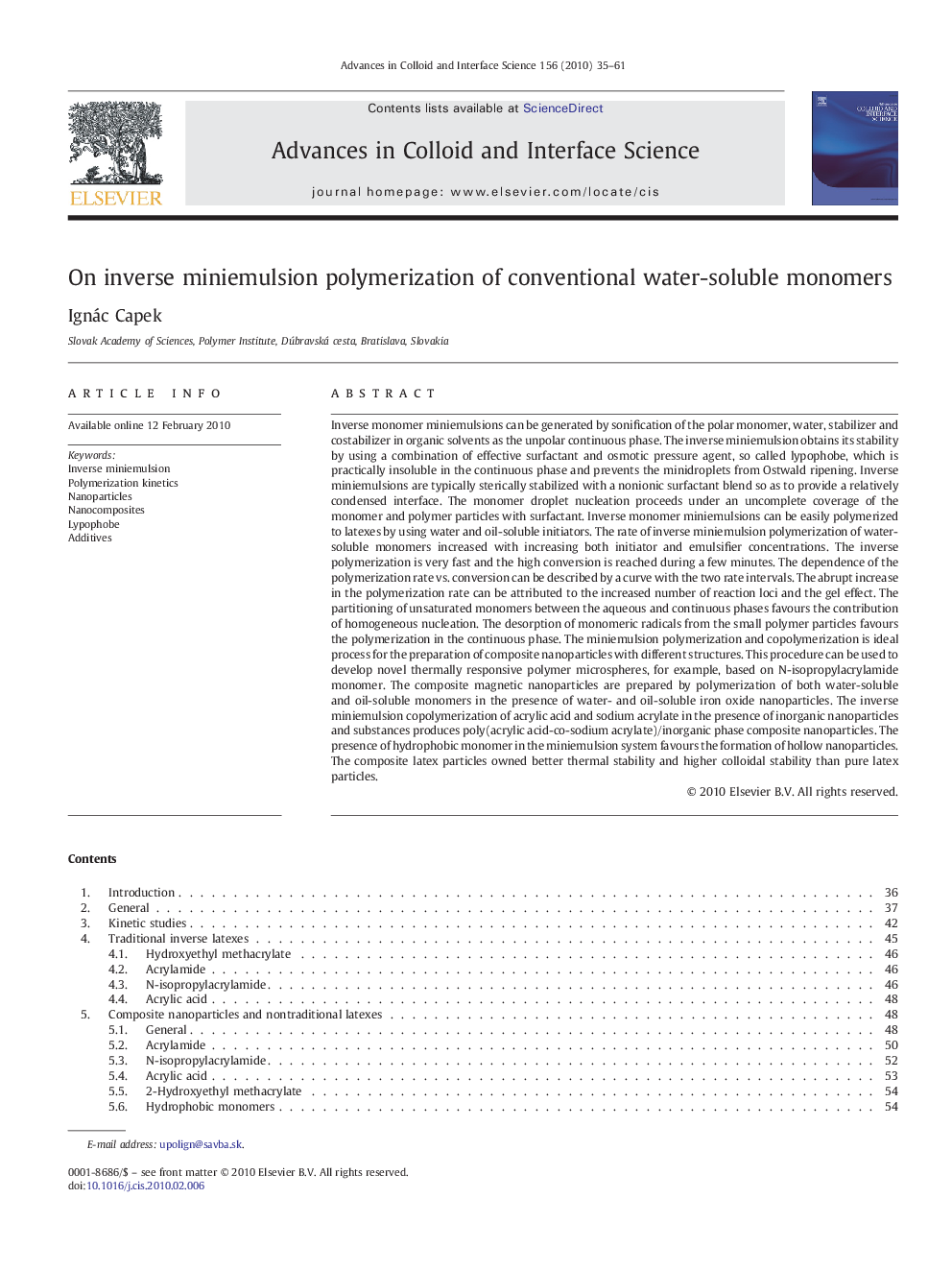| کد مقاله | کد نشریه | سال انتشار | مقاله انگلیسی | نسخه تمام متن |
|---|---|---|---|---|
| 591058 | 1453588 | 2010 | 27 صفحه PDF | دانلود رایگان |

Inverse monomer miniemulsions can be generated by sonification of the polar monomer, water, stabilizer and costabilizer in organic solvents as the unpolar continuous phase. The inverse miniemulsion obtains its stability by using a combination of effective surfactant and osmotic pressure agent, so called lypophobe, which is practically insoluble in the continuous phase and prevents the minidroplets from Ostwald ripening. Inverse miniemulsions are typically sterically stabilized with a nonionic surfactant blend so as to provide a relatively condensed interface. The monomer droplet nucleation proceeds under an uncomplete coverage of the monomer and polymer particles with surfactant. Inverse monomer miniemulsions can be easily polymerized to latexes by using water and oil-soluble initiators. The rate of inverse miniemulsion polymerization of water-soluble monomers increased with increasing both initiator and emulsifier concentrations. The inverse polymerization is very fast and the high conversion is reached during a few minutes. The dependence of the polymerization rate vs. conversion can be described by a curve with the two rate intervals. The abrupt increase in the polymerization rate can be attributed to the increased number of reaction loci and the gel effect. The partitioning of unsaturated monomers between the aqueous and continuous phases favours the contribution of homogeneous nucleation. The desorption of monomeric radicals from the small polymer particles favours the polymerization in the continuous phase. The miniemulsion polymerization and copolymerization is ideal process for the preparation of composite nanoparticles with different structures. This procedure can be used to develop novel thermally responsive polymer microspheres, for example, based on N-isopropylacrylamide monomer. The composite magnetic nanoparticles are prepared by polymerization of both water-soluble and oil-soluble monomers in the presence of water- and oil-soluble iron oxide nanoparticles. The inverse miniemulsion copolymerization of acrylic acid and sodium acrylate in the presence of inorganic nanoparticles and substances produces poly(acrylic acid-co-sodium acrylate)/inorganic phase composite nanoparticles. The presence of hydrophobic monomer in the miniemulsion system favours the formation of hollow nanoparticles. The composite latex particles owned better thermal stability and higher colloidal stability than pure latex particles.
Journal: Advances in Colloid and Interface Science - Volume 156, Issues 1–2, 22 April 2010, Pages 35–61